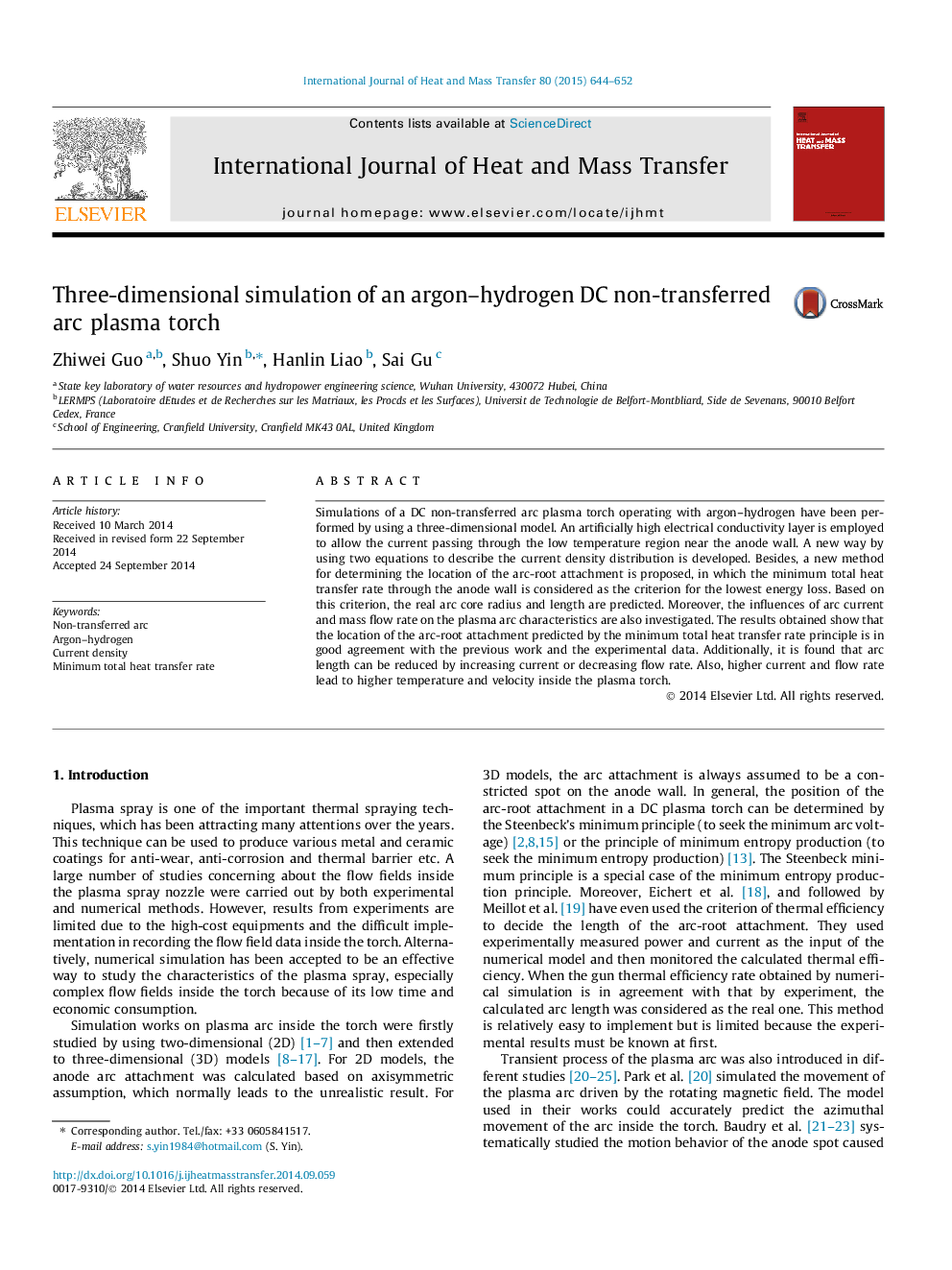| Article ID | Journal | Published Year | Pages | File Type |
|---|---|---|---|---|
| 657299 | International Journal of Heat and Mass Transfer | 2015 | 9 Pages |
Abstract
Simulations of a DC non-transferred arc plasma torch operating with argon-hydrogen have been performed by using a three-dimensional model. An artificially high electrical conductivity layer is employed to allow the current passing through the low temperature region near the anode wall. A new way by using two equations to describe the current density distribution is developed. Besides, a new method for determining the location of the arc-root attachment is proposed, in which the minimum total heat transfer rate through the anode wall is considered as the criterion for the lowest energy loss. Based on this criterion, the real arc core radius and length are predicted. Moreover, the influences of arc current and mass flow rate on the plasma arc characteristics are also investigated. The results obtained show that the location of the arc-root attachment predicted by the minimum total heat transfer rate principle is in good agreement with the previous work and the experimental data. Additionally, it is found that arc length can be reduced by increasing current or decreasing flow rate. Also, higher current and flow rate lead to higher temperature and velocity inside the plasma torch.
Keywords
Related Topics
Physical Sciences and Engineering
Chemical Engineering
Fluid Flow and Transfer Processes
Authors
Zhiwei Guo, Shuo Yin, Hanlin Liao, Sai Gu,
